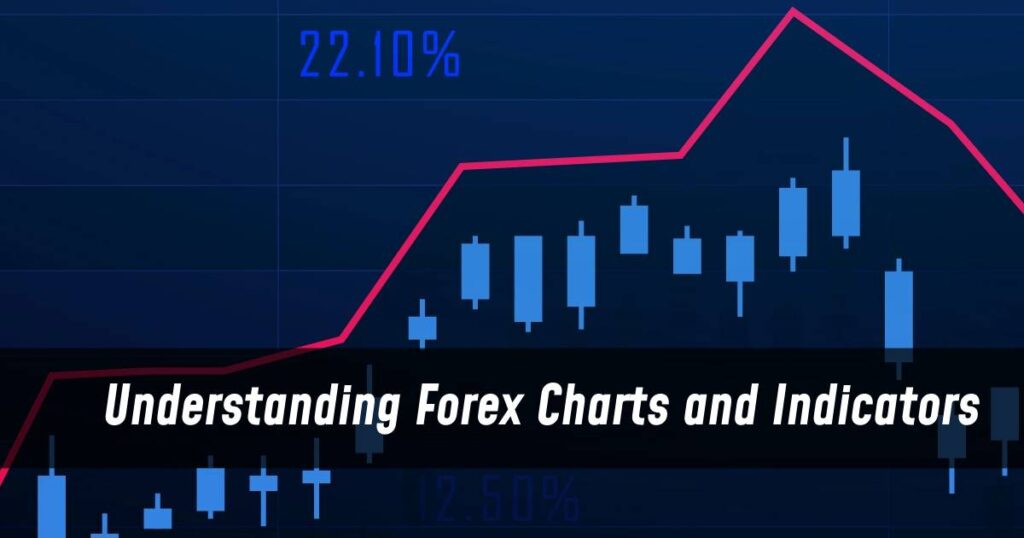Forex trading involves buying and selling currencies in the foreign exchange market. It’s a highly volatile market that requires a lot of analysis and research to make informed decisions. One of the essential tools for forex traders is charts and indicators. In this article, we’ll explore the basics of forex charts and indicators and how they can help traders make better trading decisions.

Table of Contents
- Introduction
- What are forex charts?
- Types of forex charts
- How to read forex charts
- What are forex indicators?
- Types of forex indicators
- How to use forex indicators
- How to combine forex charts and indicators
- Common mistakes when using forex charts and indicators
- Conclusion
- FAQs
1. Introduction
Forex trading involves analyzing the market to identify potential opportunities to buy or sell currencies. Charts and indicators help traders visualize the market and identify trends, making it easier to make informed decisions. Forex charts and indicators are essential tools that traders use to analyze the market.
2. What are forex charts?
Forex charts are visual representations of the price movements of currency pairs over time. They help traders to identify patterns and trends in the market. The use of forex charts is essential because they give traders a comprehensive view of the market, enabling them to make better trading decisions.
2.1 Types of forex charts
There are three main types of forex charts:
- Line Chart: A line chart is the simplest type of forex chart. It shows the closing price of a currency pair over time.
- Bar Chart: A bar chart is more complex than a line chart. It shows the opening, closing, high, and low prices of a currency pair over a specific period.
- Candlestick Chart: A candlestick chart is the most commonly used forex chart. It shows the opening, closing, high, and low prices of a currency pair over a specific period, represented by a candlestick.
2.2 How to read forex charts
To read forex charts, you need to understand the information they provide. You can use forex charts to identify patterns and trends in the market, which can help you make informed trading decisions.
3. What are forex indicators?
Forex indicators are tools that help traders analyze the market and identify potential opportunities to buy or sell currencies. They are mathematical calculations based on the price and/or volume of a currency pair.
3.1 Types of forex indicators
There are two main types of forex indicators:
- Lagging Indicators: These indicators follow the price movement of a currency pair. Examples include moving averages and Bollinger Bands.
- Leading Indicators: These indicators predict future price movements. Examples include Relative Strength Index (RSI) and Stochastic Oscillator.
3.2 How to use forex indicators
To use forex indicators, you need to understand their purpose and how they work. Each indicator provides a specific type of information about the market, and traders use them to identify potential trading opportunities.
4. How to combine forex charts and indicators
Combining forex charts and indicators can help traders make better trading decisions. When used together, they provide a comprehensive view of the market, enabling traders to identify potential opportunities to buy or sell currencies.
5. Common mistakes when using forex charts and indicators
Traders often make mistakes when using forex charts and indicators. Some of the common mistakes include:
- Over-analyzing the market
- Focusing on too many indicators
- Ignoring the fundamentals of the market
6. Conclusion
In conclusion, forex charts and indicators are indispensable tools for traders in the foreign exchange market. Forex charts help traders visualize the market, identify trends, and make informed decisions. Forex indicators, on the other hand, provide mathematical calculations based on the price and volume of currency pairs, helping traders predict future price movements.
Combining forex charts and indicators is essential for traders who want to gain a comprehensive view of the market and make informed trading decisions. However, it’s essential to avoid common mistakes such as over-analyzing the market, focusing on too many indicators, and ignoring the fundamentals of the market.
By understanding forex charts and indicators, traders can gain a deeper understanding of the foreign exchange market and increase their chances of making profitable trades.
7. FAQs
- What are forex charts used for? Forex charts are used to visualize the price movements of currency pairs over time and identify patterns and trends in the market.
- What are the different types of forex charts? The different types of forex charts are line charts, bar charts, and candlestick charts.
- What are forex indicators? Forex indicators are mathematical calculations based on the price and/or volume of a currency pair, which help traders analyze the market and identify potential trading opportunities.
- What are the common mistakes when using forex charts and indicators? The common mistakes when using forex charts and indicators are over-analyzing the market, focusing on too many indicators, and ignoring the fundamentals of the market.
- How can traders combine forex charts and indicators? Traders can combine forex charts and indicators by using them together to gain a comprehensive view of the market and identify potential trading opportunities.

